Introduction
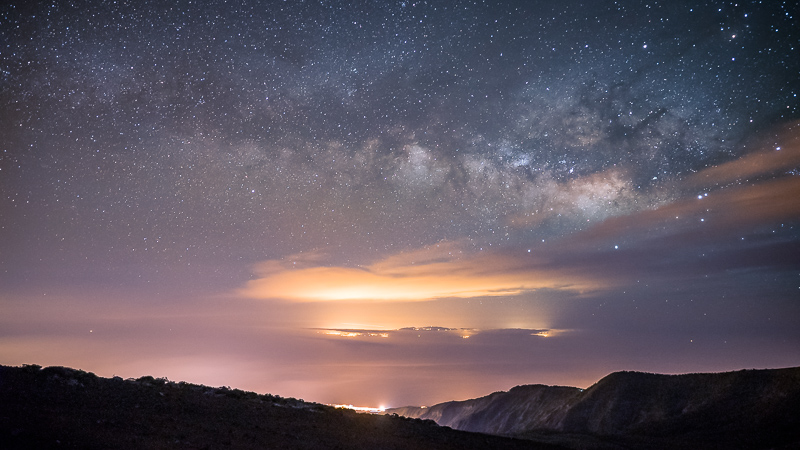
Landscape astrophotography is something I have been doing for several years. Luckily over the past few years many lenses have been released that make this task easier than ever. So today we are going to have a look at all the available lenses for your Sony so you can choose the one that works best for your needs.
Last update: December 2021
What is landscape astrophotography?
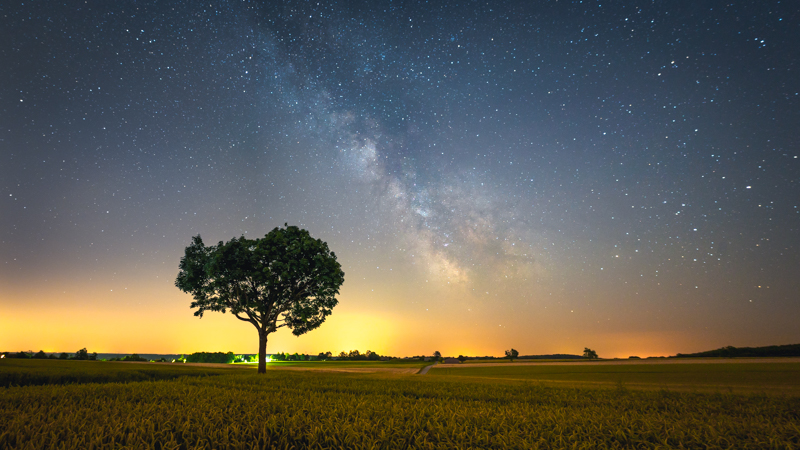
In landscape astrophotography you will usually try to have a combination of the starry sky (with Milky Way or Northern Lights) as well as some foreground (e.g. landscape) in your frame so we are mostly looking at ultra wide to normal lenses (for stitching) here.
I am not going to talk about deep sky astrophotography, this is a field I have very little experience in and you will need completely different (longer) lenses and rely on a guidance system most of the time.
What lens characteristics are important?
Generally a wide and fast lens makes life easier for us, but the lenses also need to be good wide open with somewhat decent corner resolution and coma correction.
This rules out pretty much all old legacy lenses.
It would also be nice if the lens has low vignetting and if it can easily be focused manually, as we can’t rely on autofocus at night.
A few more notes on the lenses I am going to introduce:
- For the non native ones you need a very good adapter because pretty much all of these feature floating elements and will suffer from a too short adapter in the corners.
- I sometimes provided links to the reviews at Lenstip, as they have a look at coma correction and vignetting. But keep in mind vignetting can absolutely not be compared across different sensors or cameras!
What is the best focal length?
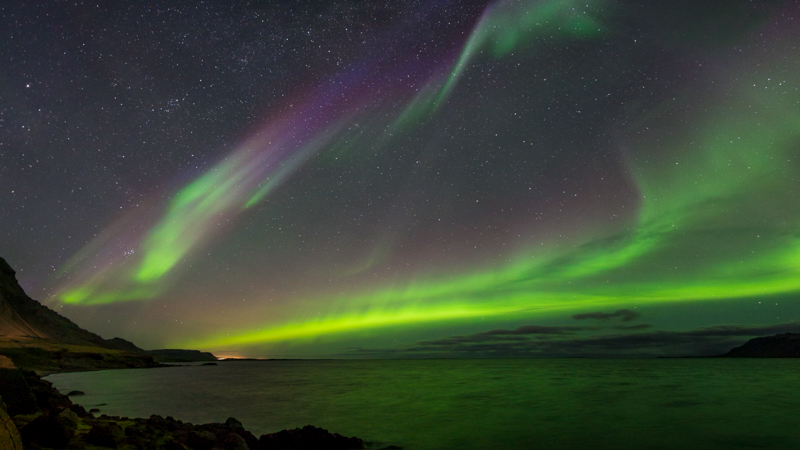
Maybe you already came across this article where I described how to improve your astro-photography pictures by using panorama techniques, nevertheless this is obviously more work and wider lenses are more straightforwarded.
- 12-16mm lenses are great for single shot astrophotography to get the interesting part of the Milky way as well as some foreground in one shot. These are also best for taking pictures of the Aurora, as stitching is often not easily possible here because of the movement involved.
- With the 17-25mm lenses you will need to take single row panoramas if you want the sky and some foreground in the frame most of the time. By doing so – and only taking 3 to 5 shots – you will already surpass the image quality of most of the wider lenses.
- With the 28-40mm lenses you will start to need 2 row panoramas which is quite a bit of work. I only recommend this if you are more experienced in the field of astrophotography and want to further increase the image quality of your shots.
- With the 50-55mm lenses you are now looking at multirow panoramas which can give great quality images but are also quite a lot of work.
I did not include fisheye lenses here. Some people like to use those for astrophotography because of the wide field of view but it is very hard getting decent framing with these.
Big thanks to Haitong Yu who was collaborating with me on this article! You can check out some of his amazing astrophotography work on 500px, Instagram or Tuchong (this last one is in Chinese).
Sony FE 12-24mm 2.8 GM
Sony went all in with this one, offering 12mm at the wide end together with a maximum aperture of f/2.8. The optical qualities are astounding, but they came at a price of almost three grand.
Verdict: great specs and great image quality, if you can and want to afford it
847g | $2998 | cameralabs review
Amazon.com | Amazon.de | B&H | ebay (affiliate links)
Laowa 12mm 2.8 Zero-D
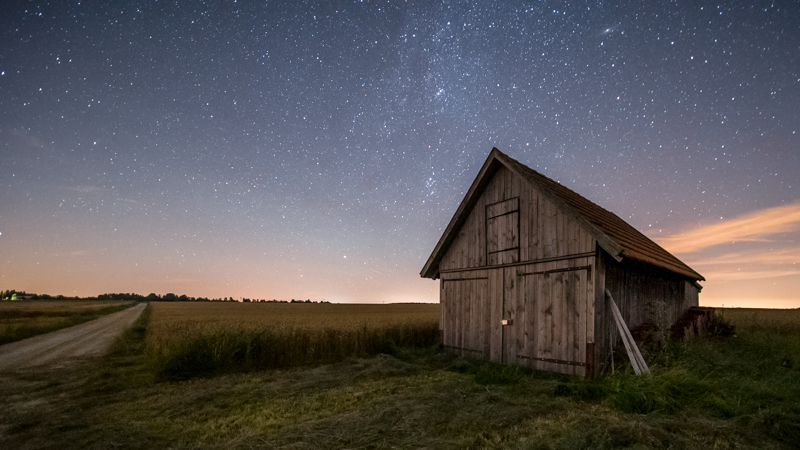
Here you can get the combination of 12mm and f/2.8 at a lower price point. Coma correction is not bad, but the Sony GM 12-24mm 2.8 will surpass it in terms of image quality.
Verdict: if you like the really wide field of view this is a decent performer for astrophotography.
I recommend getting the Canon version so you are able to use the Magic Shift Converter if necessary.
640g + adapter | $949 | full Review | aperture series | sample images
buy from manufacturer | amazon.com | amazon.de | ebay.com | ebay.de | B&H (affiliate links)
Sony FE 14mm 1.8 GM
Again Sony surprised us with this one as it is surprisingly compact for what it is. The price you pay for that compared to the Sigma lens is ~ 0.7 EV worse vignetting in the corners.
Unfortunately sample variation seems to be an issue with this lens, so this is one of the lenses where it is better to buy where you have a return option and doing a decentering test.
Verdict: if you get a good sample one of the – if not the – best options in this focal length range
460g | $1598 | Review at Lenstip
amazon.com | amazon.de | B&H | ebay (affiliate links)
Sigma 14mm 1.8 Art
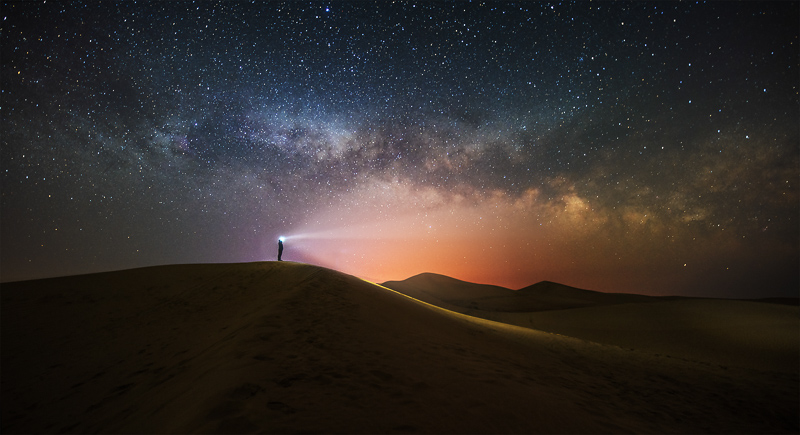
The now somewhat outdated alternative to the aforementioned Sony lens due to being much bigger and heavier. Coma correction is not exactly as perfect as you would expect and as is the case with most of the fast wide angle lenses sample variation can be an issue too.
Haitong Yu: Very favourable is the lower vignetting compared to most of the other 14/15mm lenses.
Verdict: if you don’t mind the weight and bulk this is a great lens for astrophotography, can be found cheaper used
1170g + adapter | $1599 | Review at Lenstip
buy from amazon.com | amazon.de | ebay.com | ebay.de | B&H (affiliate links)
Samyang 14mm 2.4 XP
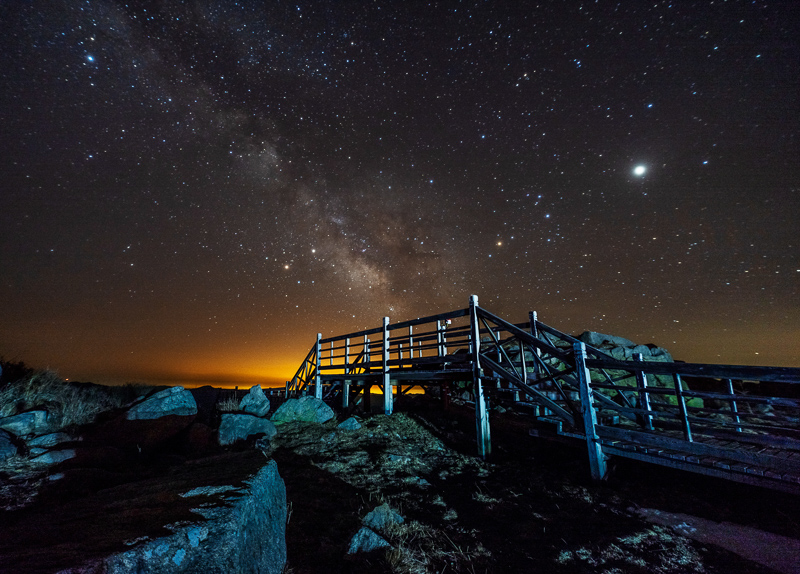
A bit slower than the two aforementioned lenses and inbetween in terms of bulk. Coma correction is better at shared apertures.
Haitong Yu: It has the best rendering I have ever seen for starry sky among any lens. Not only does it correct coma better than any other 14-15mm lenses, it actually keeps some spherical aberration in the image, which makes brighter stars look larger in the image (notice the Orion and the Jupiter in the image). This is highly similar to what can be perceived by naked eyes at the scene.
Verdict: if you are looking for very good coma correction coupled with not so high vignetting wide open this is your lens.
791g + adapter | $799 | Review at Lenstip
buy from amazon.com | amazon.de | ebay.com | ebay.de | B&H (affiliate links)
Samyang 14mm 2.8 (older MF version)

It is known for huge distortion but also for decent resolution and good coma correction. Unfortunately sample variation is a real issue with this lens, so be sure to try yours out before you buy it.
Verdict: still the best budget option for landscape astrophotography.
570g (E-mount version) | $300 | Review | sample images
buy from amazon | amazon.de | ebay.com | ebay.de | B&H (affiliate links)
Samyang 14mm 2.8 AF
It does not share the huge distortion of the MF version, but seems to be worse otherwise.
Verdict: not recommended.
505g | $629 | Review | sample images
buy from amazon.com | amazon.de | ebay.com | ebay.de | B&H (affiliate Links)
Sigma Art 14-24mm 2.8 DG DN
Really good coma correction at the wide end, high vignetting but not higher than that of the comparable lenses.
Verdict: If you can live without the 12mm of the Sony FE 12-24mm 2.8 GM this is the more reasonable choice, offering similar optical qualities at less than half the price. Better choice for astrophotography than the aforementioned 14mm f/2.8 prime lenses
795g | $1399 | lenstip review
amazon.com | amazon.de | B&H | ebay.com (affiliate links)
Laowa 15mm 2.0 Zero-D FE
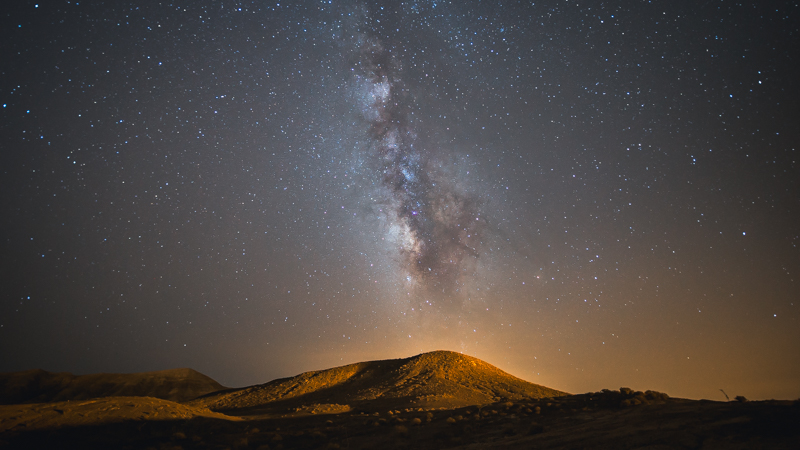
When this lens was announced my interest in the Sigma 14mm 1.8 Art vanished over night. Because this Laowa makes use of the narrow flange focal distance of the E-mount cameras it is much smaller and lighter than the aforementioned Sigma.
Coma correction seems to be comparable to the Sigma and sample variation can be an issue here, too.
Verdict: at the moment my lens of choice for single-shot astrophotography with Sony E-mount cameras.
520g | $849 | full Review | aperture series | sample images
buy from manufacturer | amazon.com | amazon.de | ebay.com | ebay.de | B&H (affiliate links)
Irix 15mm 2.4
All the aforementioned lenses have similar vignetting characteristics, this is quite a bit worse and also has worse resolution figures.
Verdict: because of the size and because it is not really giving anything over the other lenses I see no reason to get it.
685g + adapter | $425 | Review at Lenstip
buy from amazon.com | amazon.de | ebay.com | ebay.de | B&H (affiliate links)
Sony FE 16-35mm 2.8 GM
Vignetting is a little higher and it is not as fast as some of the other lenses.
Verdict: a bit pricey, but a versatile wide angle zoom that also works well for astro-photography.
680g | $2198 | Thread at Fred Miranda
buy from amazon.com | amazon.de | ebay.com | ebay.de | B&H (affiliate links)
Tamron 17-28mm 2.8
Very good coma correction and resolution at the wide end, not so much at the longer end.
Verdict: if you only rarely do astrophotography this will serve you well and it is reasonably priced and even comes with a normal 67mm filter thread.
420g | $899 | full Review | sample images
buy from amazon.com | amazon.de| B&H (affiliate links)
Zeiss Batis 18mm 2.8
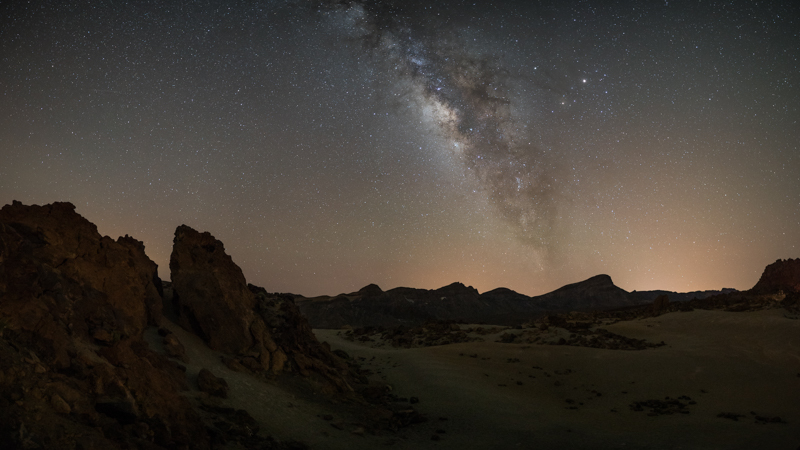
Coma correction is very good as is resolution, but it is more on the expensive side and not as fast as some other options.
Verdict: good lens for astrophotography, but I wouldn’t buy it exclusively for that.
330g | $1500 | full Review | aperture series | sample images
buy from amazon.com | amazon.de | ebay.com | ebay.de | B&H (affiliate links)
Sigma 20mm 1.4 Art
The specs look really great but the coma performance of the sample I once tried was not good enough compared to the other slightly less fast 20mm lenses to warrant the weight and size penalty.
Verdict: a good but very bulky lens for astrophotography.
950g + adapter | $899 | Review at Lenstip
buy from amazon.com | amazon.de | ebay.com | ebay.de | B&H (affiliate links)
Sony FE 20mm 1.8 G
A very capable lens in a compact package at a fair price. For many this might be a better option than the Sony FE 24mm 1.4 GM.
Verdict: Not free of coma at f/1.8, comparable to the Sony FE 24mm 1.4 GM but noticeably cheaper. A very good option for milky way shooting in the E-mount system. .
373g | $898 | cameralabs review
buy from amazon.com | amazon.de | B&H | ebay.com (affiliate links)
Samyang 20mm 1.8

This is a good performer, but because it is designed for DSLRs it is rather bulky.
Verdict: This is no slouch, but I would rather get the 20mm 2.0 Firin for E-mount.
525g + adapter | $550 | Review at Lonelyspeck
buy from amazon.com | amazon.de | ebay.com | ebay.de | B&H (affiliate links)
Tokina Firin 20mm 2.0
The lens has its flaws when it comes to daylight photography (lens flares), but it has high resolution, low coma and is decently priced, so in the end a very good choice for astrophotography.
Verdict: better get the Sony FE 20mm 1.8 G these days
490g | $699 | full review | aperture series | sample images
buy from amazon.com | amazon.de | ebay.com | ebay.de | B&H (affiliate links)
Zeiss Loxia 21mm 2.8

Coma correction is very good as is resolution, but it is more on the expensive side and not as fast as some other options.
Verdict: good lens for astrophotography, but I wouldn’t buy it exclusively for that.
394g | $1499 | full review | aperture series | sample images
buy from amazon.com | amazon.de | ebay.com | ebay.de | B&H (affiliate links)
Sony FE 24mm 1.4 GM
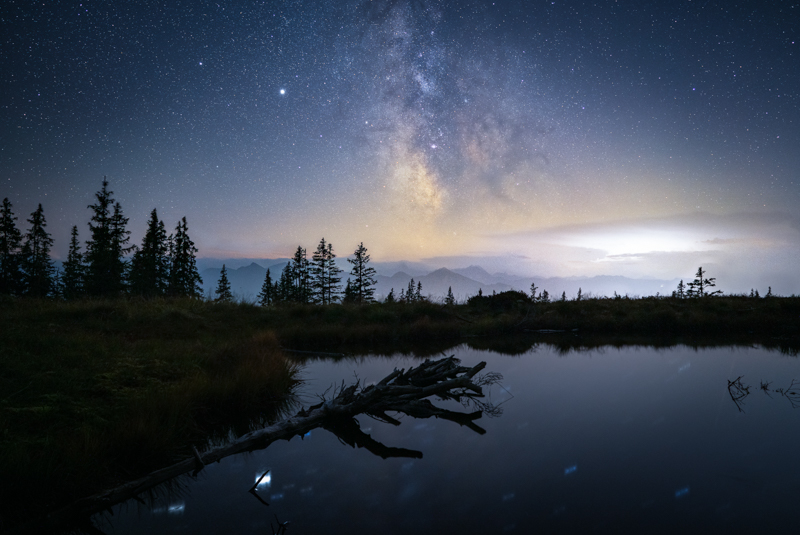
The best 24mm 1.4 lens to date and on top of that a compact one.
Verdict: Not free of coma at f/1.4 and there is a bit of field curvature that may bother you, nevertheless a good albeit pricy option for milky way shooting.
445g | $1399 | full review | aperture series
buy from amazon.com | amazon.de | B&H | ebay.com | ebay.de (affiliate links)
Zeiss Batis 25mm 2.0
Coma correction wide open is okay and improves when you stop down to f/2.8 to good yet not perfect levels.
Verdict: you can use this lens for astrophotography but there are lenses with significantly better price/performance ratio available for this application.
335g | $1199 | full review | aperture series
buy from amazon.com | amazon.de | ebay.com | ebay.de | B&H (affiliate links)
Zeiss Loxia 25mm 2.4
Coma correction is very good as is resolution, but it is more on the expensive side and not as fast as some other options.
Verdict: good lens for astrophotography, but I wouldn’t buy it exclusively for that.
393g | $1299 | full review | aperture series | sample images
buy from amazon.com | amazon.de | ebay.com | ebay.de | B&H (affiliate links)
Sony FE 28mm 2.0
This lens has decent coma correction and is comparably cheap, but the focal length is not optimal and you will probably need to take a panorama for nice framing of the Milky way.
Verdict: if you already have one you should try it out and see if astrophotography is for you.
200g | $450 | full review | aperture series | sample images
buy from amazon.com | amazon.de | ebay.com | ebay.de | B&H (affiliate links)
Sigma 35mm 1.2 Art DG DN
Despite being an f/1.2 lens this is the highest performing 35mm lens available with staggering optical performance.
Verdict: Vignetting is high and there is low coma at f/1.2, still, short of the Sigma 40mm 1.4 Art the best lens for astrophotography in this focal length range.
1090g | $1499 | Review
buy from amazon.com | B&H | ebay.com | ebay.de (affiliate links)
Sigma 35mm 1.4 Art
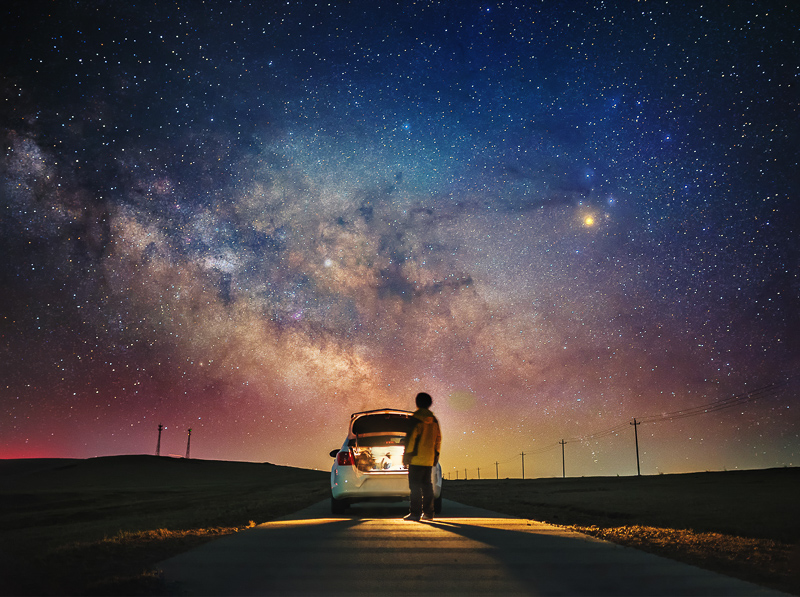
Coma correction seems to have been pretty high on Sigma’s priority list for most Art lenses.
Verdict: this is a good lens for astrophotography panoramas but has been clearly surpassed by Sigma 35mm 1.2 Art DG DN and Sigma 40mm 1.4 Art.
740g | $899 | Review
buy from amazon.com | amazon.de | ebay.com | ebay.de | B&H (affiliate links)
Samyang 35mm 1.4 AF
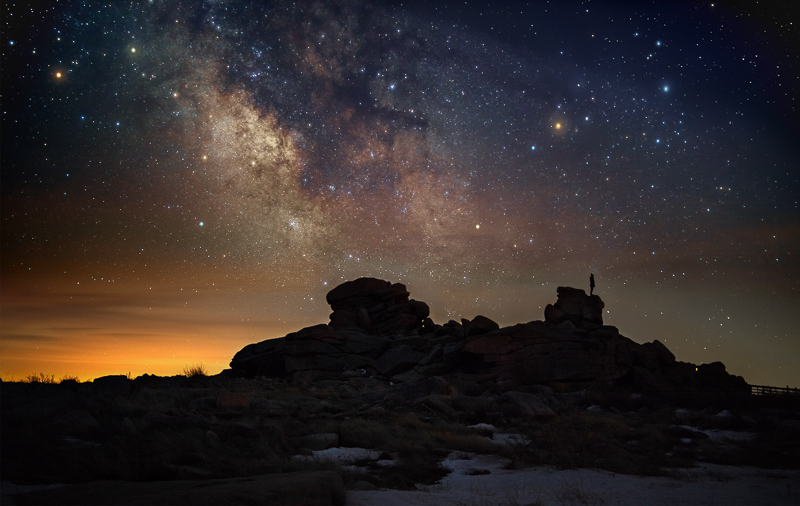
Haitong Yu: This may replace my beloved Sigma 35mm 1.4 Art as my choice for 35mm astro photography. It corrects coma even slightly better, and keeps some spherical aberration to make brighter stars stand out. It is slightly smaller than the Sigma + adapter and as a native FE lens it has quiet and fast AF when you need those. The downsides are more LoCA and vignette wide open, and during day hours you may find more lens flares.
Verdict: a good native option that is comparably cheap.
645g | $578 | Review at lenstip
buy from amazon.com | amazon.de | ebay.com | ebay.de | B&H (affiliate links)
Sigma 40mm 1.4 Art
Maybe the best performing f/1.4 lens, but also one of the heaviest.
Verdict: Almost perfect coma correction, lower vignetting than the competition, almost apochromatic correction. One of the best lenses for astro panoramas, but also one that will weigh you down thanks to being almost 1.3 kg.
1265g | $1499 | Review
buy from amzon.com | amazon.de | B&H | ebay.com | ebay.de (affiliate links)
Sigma 50mm 1.4 Art
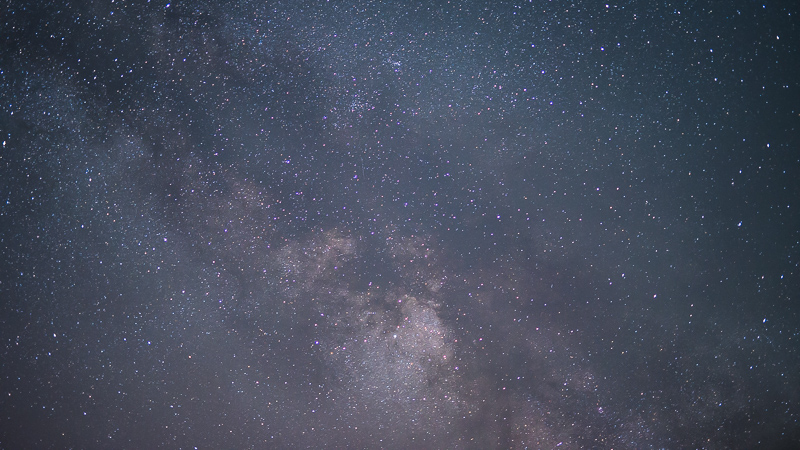
It has low vignetting, it has good coma correction, it has very high resolution. Unfortunately it is also very big and heavy.
Verdict: probably the best 50mm lens for astro panorama images.
815g + adapter | $949 | Review at lenstip
buy from amazon.com | amazon.de | ebay.com | ebay.de | B&H (affiliate links)
Sony FE 55mm 1.8 ZA
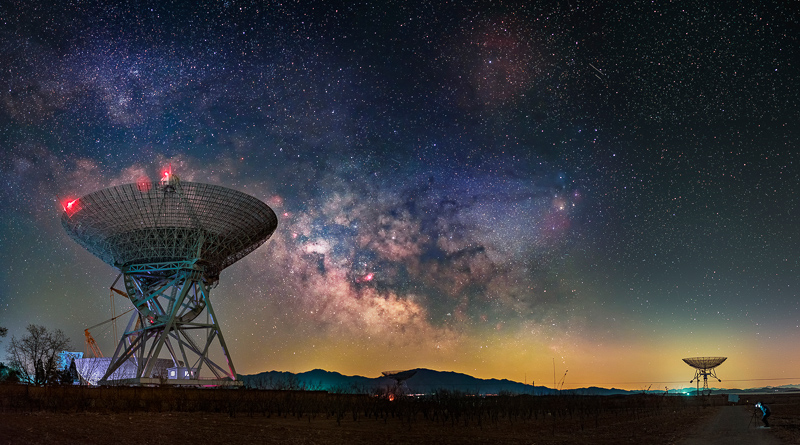
This is not as good a choice as the Sigma Art, but it is still a very capable lens and obviously way more compact and significantly lighter.
Verdict: compact standard lens for astro panorama images.
I bought it for this specific usage scenario but the focus by wire was driving me nuts so I sold it.
281g | $898 | full review | aperture series
buy from amazon.com | amazon.de | ebay.com | ebay.de | B&H (affiliate links)
Conclusion
As you can see there are now many lenses available that are capable of delivering very nice landscape astrophotography shots. Especially the modern fast ultra wide angle lenses (Sony/Sigma 1.8/14, Laowa 2/15, Samyang 2.4/14 XP) and also some of the modern zoom lenses (Sony 12-24mm 2.8, Sigma 14-24mm 2.8, Tamron 17-28mm 2.8) are making it easy – even for beginners – to take such shots.
If you don’t mind taking just a simple single row panorama a lens like the Sony 20mm 1.8 G can give you even better results without breaking the bank.
And if you are running on a tight budget try the Samyang 2.8/14 (MF) or the Sony 2/28.
Further Reading
- Sony FE lenses: Our comprehensive and independent guide
- Making of series: Milky Valley
- Carl Zeiss Jena Visionar 109mm 1.6
- Tripods for mirrorless cameras
Support Us
Did you find this article useful or just liked reading it? Treat us to a coffee!
![]()
![]()
![]() via Paypal
via Paypal
This site contains affiliate links. If you make a purchase using any of the links marked as affiliate links, I may receive a small commission at no additional cost to you. This helps support the creation of future content.
Latest posts by BastianK (see all)
- Review: SLRmagic 50mm 0.95 Hyperprime LM - July 5, 2025
- Full Resolution Pictures getting fixed - July 4, 2025
- Analogue Adventures Part 42: A wedding with Eastman Double-X 200 - July 2, 2025
So glad to see the Samyang 14/2.4 SP mentioned here. The lens seems to be hiding in obscurity perhaps because of Samyang’s reputation of sample variation (not the case with this lens) and/or confusion with the older 14/2.8. Anyway, the 14/2.4SP is a great lens for Astro and more.
I would like to give the SP lenses a try out, but unfortunately the german distributor sucks, so getting samples ain’t that easy.
That’s too bad as I think it is a sleeper of a lens. I mostly use it for astro but the few shots I’ve taken for landscape are quite sharp. The rendering is a bit more sterile than, let’s say, my Voigtlander 15/4.5 III but I’d love to see you guys do a full assessment. Too bad we are so distant otherwise, I would lend you mine.
how come no mention of the cv 35mm 1.7 ultron you used in the Dolomites?
I use the irix 15mm and I think it does a fair job and if you are on a budget it is worth considering… ?
cheers, A.
For the Voigtlander 35mm 1.7 you will need a 5m PCX for decent performance for this kind of application.
This is a bit of a hassle and the set of lens and PCX element will cost more than a Sigma 35mm 1.4 Art which delivers a better performance.
In the US the Irix 15mm 2.4 is still double the price of a manual focus Samyang 14mm 2.8 while I don’t think the performance is actually noticeably better, so I still find it hard to recommend.
But I can definetly see people giving it a try after they had 3 decentered Samyangs in their hands (as did I) 🙂
I agree with that, Irix resolution at infinity is quite good, like coma correction, the lens is not designed for the testchart distances which are much shorter… Oh and Nikkor 20mm f1.8 @ f2.5 is great as well.
I agree on that, it’s better than the old Samyang 14 f2.8 UMC. Low sample variation.
As for normal lenses, what about the Loxia 50?…
I was comparing Loxia 50mm 2.0 and FE 55mm 1.8 ZA directly for that purpose.
The Loxia has very unfavourable midzone dip wide open and coma correction is a little worse.
But with the manual focus the Loxia is a bit more fun to use.
All Loxias have an astro issue caused by the shape of the apperture. This lens line produce even open sun stars around luminous stars like Jupiter or Venus. This is a no-go in astro imaging. The 50mm Loxia is pronouncing un-wanted sun-stars especially strong. Therefeore my Loxia 50mm ample ended soon in the sales box.
Clearly the best 50mm performer in the FE family is Sony Zeiss Planar 1.4/50 ZA. Except vignetting it is already open practically perfect.
Bastiank and Hansi, thank you for you answer 🙂
What about sigma 40mm F 1.4 art? It seems like a good alternative.
This post is tailor-made for me.
Thank you so much, Bastian.
Seriously
Very interesting article! I really like the shot with the Nikon 20/1.8 and the one with the shed. Currently I use the Loxia 50/2 and Samyang 14mm t3.1. The quality of the Samyang is indeed terrible. My first sample had some issues but was well centered, my second sample had to be repaired since it got decentered over time… Performance is good though.
The Loxia’s coma correction is indeed not perfect but well enough for me. It shows indeed sun stars around very very bright stars, but to be honest, I like the effect 😉 https://flic.kr/p/FEmrXD
The Firin 20/2 looks like a nice less wide lens for astro work.
Thank you for the article!
Kind regards, Juriaan
you had sigma 50mm f1.4 art and FE 55mm f1.8 in the list, but how about FE 50 f1.4 ZE?
Kinda forgot about that one, I will look into it!
I am curious about the new sigma 40mm F1.4 art performance in this particular usage. It seems like a good choice.
May be a good choice. Haven’t seen any astro pictures taken with it on an E-mount camera yet and little to no interest in reviewing it, especially as we will soon have a native Sigma Art 35mm 1.2 with GM handling qualities.
Thanks, and looking forward for your Sigma 35 F1.2 review 😀
Oh uhh, the Tokina ATX 90mm f2.5 is an unexpected great astro lens,it can be used wide open! No coma. other good performers, the best Pentax A* ED 200mm, Sigma Art 135 and 85mm, cheap and great Samyang 135mm f2. + Nikkor AIS 180mm ED, Nikkor 105mm f2 DF not bad! and there are some more.
Have you tried the OTHER Sony 16-35 f/4? I haven’t tried astro photography but I do own this lens.
Worth a try? Thanks!
I don’t really like to use f/4 lenses for astrophotography, this is why you will find none in this list.
If you already own the lens you can of course give it a try.
I also took a few wit Voigtlander 4.5/15.
I have used it and got decent results so for occasional astro photography it can be a decent results. Not as good as those with dedicated lenses but good enough for many.
I got a used Irix 15mm Firefly and use it with Sigma MC11 Adapter.
280€ seemed like a very good deal since i get native ibis and exfi data with it. (What you don’t have with the Laowa and the Samyang).
Apart from that you can use 95mm screw on Filters, GEL Filters and can lock the Focus, it is 2.4 instead of 2.8 and in reality you will end up with the same price than the Samyang because you can confidently buy it used, which is not possible with Samyang´s sample variation.
And the fire fly version is actually only 608g for Canon.
A short search on google revealed that also that Irix 15mm seems to have severe sample variation issues.
This unfortunately applies to pretty much all of the fast wide angle lenses, so I would be very cautious with buying any of these used.
Nikkor 20mm f1.8 (@ 2.5) and Sigma 15mm EX fisheye f2.8 are great astro lenses as well, concerning Sony-adapters you need the proper thickness on the Nikkor. Nikkor 24mm f1.8 can be used wide open. Oh a D750 body performs better than the new Sony A7 iii , compared it last may in the Pyrenees. A7 had more ampglow and some strange artefacts in the RAW-data + less sensitive to H@ (red nebulae)
If you get bored, check out a Canon FD SSC 35/2. Didn’t spend a ton of time with it but shocked me with its good resolution, coma performance and flat field. Only widish legacy lens I’ve come across that works well.
The Sony FE 35mm 1.4 is even better than the Sigma. I’ve used it for Astro panos. Also, another vote for the Sony FE 50mm 1.4 planar, this lens is off the charts amazing. I typically stop down to f2.0 and it’s rendering is the best I’ve seen for astro.
This is a great article, thank you! Astro is my main focus and although I don’t get to do it nearly as much as I like I’m passionate about it. This convinced me to pull the trigger and pick up a Tokina 20mm, but I wish this lens could have been better in the flare department… If Laowa had a 20-ish lens with similar performance to their 15mm and similarly priced I’d get that in an instant.
I tried a few copies of the Tokina and I couldn’t get one that had acceptable performance across the frame. All of my copies were decentered to some degree, similar to what Phillip described in his review. I don’t have the budget for the Loxia right now so I went with the Samyang 20mm instead. It’s big and the corners never really get razor sharp but it has little-to-no variance across the frame, it might be one of the better build Samyangs. It needs to be stopped down to 2.8 for perfect stars but I’m OK with that.
I’m not an expert but I’ve had what I consider very good results with the humongous (and expensive) Zeiss ZF.2 Distagon T* 15mm f/2.8, which I use on a Novoflex adapter equipped with their ASTAT-NEX tripod collar. Do you know how it compares with the other lenses in your quite informative review?
By now that Zeiss is a slightly dated design compared to the lenses mentioned here.
As it is big, very expensive and not overly fast I would not recommend buying one for this task.
Nevertheless, if you already own it it should give you satisfactory results.
What adapter have you used with the Samyang 14mm XP? There are many who with the second generation of A7`s worked well and with the third not.
What are your thoughts on the new Sony G Master 24 F/1.4 for astro Bastian? I’m currently using the Batis 18 but am very interested as it will help create a one lens solution for covering family events as well. Based on charts from lonely speck it would appear this focal length/aperture combination is a good find. Have you been able to test the new G Master in this manner yet? Here’s the chart in question: https://docs.google.com/spreadsheets/d/1p8FSEIaDd45i97NXFEZf4fnVOQ3ifA43ecJcuS0nCJ0/edit
The coma correction seems to be influenced by field curvature a bit, at least that was what I saw with my sample and it was also spotted by Haitong Yu (see comments on our 24mm 1.4 GM review).
As milky way season is over for this year this will take some further investigation.
Great article, thank you!
I’m curious, what is your opinion regarding the motorized tripod heads for astrophotography, intended to keep the stars from moving in frame? It’s a bit different shooting style though, with emphasis on using the telephoto lenses.
Have a look at this article to find my opinion on those.
Thank you!
I almost buy Samyang 14mm 2.8 AF for a7iii, now i find this site, what is wrong with that lanes, i had 14mm 2.8 MF on nikon and i was happy, isn’t this same just with AF?
It isn’t the same design. Corners are quite a bit weaker which makes it a bad choice for astro photography.
What about the tiny Zeiss 35mm 2.8?
Way too slow, too high vignetting.
Hello,
which astro landscape lens would you recommend for the A7RIII with an open budget?
– Wide as possible, low coma, fast
(Gerne auch auf Deutsch)
If you don’t care about size and weight the Samyang 14mm 2.4 XP (you need a good adapter with exact length, so the Sigma MC-11).
The Sigma Art 14mm 1.8 is a little faster but has worse coma correction and I saw quite a few reports on decentered lenses.
The Laowa 15mm 2.0 is a little worse optically but significantly lighter and smaller than the aforementioned two.
Wow thanks for the fast answer! ?
I just returned the Loawa 15mm F/2 because of the weak corners and soft focus in the center of the frame. Waiting to hear if I’ll get a refund or exchange. I still have hopes for this lens as the build quality and overall feel seemed perfectly suited for the a7s.
I’m hopeful a fast, wide prime will be in Sony’s next lens release, their lenses just seem to be getting better and better.
Thanks for the very informative blog post! Has basically served as my lens bible for astro. Just wondering if you had any word on the samyang AF 50mm 1.4, can’t see anything online about it in terms of coma or performance at night in general. Looking for a 50mm for tracked panos using a A7RIII, would the Sigma still be your top choice?Seems the planar may actually out perform it but is roughly twice the price and if I stop down the sigma surely the differences would negligible? Particularly on a tracker.
The Samyang 50mm 1.4 AF has rather bad coma correction and also corner resolution, see the lenstip-review.
Compared to the Sigma 50mm 1.4 Art the Sony/Zeiss 50mm 1.4 doesn’t fare to great in my opinion: S/Z 50mm 1.4 @dpreview, Art @lenstip.
But then, if you want to use the lens stopped down on a tracker pretty much every modern 50mm lens will be good enough.
Any thoughts on the samyang 24mm 1.4? seems to be lauded by many an astro photographer. Great price performance ratio. Actually tossing up between this and the tokina firin 20mm f2.
When you manage get a good sample I am sure it will work well for you.
Looking at the batis 18, laowa 15 and loxia 21 for my a7iii. While Astro performance is important, I’d also like to use the lens very regularly for landscapes and to a much lesser extent skiing and mountain biking photography (only for specific situations).
Obviously the batis is AF which helps in the last situation, but I’ve had success in the past with the MF rokinon 12mm doing action sports shooting.
What would be your recommendation?
Ah that is a difficult decision.
I have the 2/15 and the 2.8/21 if that helps 🙂
When it comes to astrophotography I usually take panos with the 21mm while the 15mm I use for single shot.
first of all: GREAT article and lens reviews! thanks for all the information! 🙂
i have a sony a7iii with a samyang 20mm f1.8.
the decision for that lens was done very quickly, as i bought camera and lens just 1 week before a short trip to la palma. so i didn’t really have time to compare a lot and i read THIS article much later. i thought i just buy a cheap/ok lens to try some astrophotos and then look for a “better” lens after the trip, with more time for research…
conditions on la palma were not “great” (cloudy/rainy), so i only managed to take some astrophotos on the very last evening. i am a BEGINNER i have to say… so i just shot photos wide open with f1.8, never thought of 2.8 or so….
i found the best results with iso3200, 15s, f1.8. for everything longer than 15s i had the feeling the sensor already produced star trails, at least the stars started to get less sharp in my opinion. i read that the “500 rule” doesn’t work with modern camera sensors. and the “photo pills” app recommended to use 13s for my setup, so i ended up using 15s…
the stars in my photos have some “blue hats” pointing into the topleft direction. i guess that is what is called “coma”? this effect is visible all over the image, even in the center with less bright stars. in the corners of the photo the effect gets stronger, so stars start to look almost “triangular”. of course i can correct some things in lightroom, at least the “blue hat”, but of course the stars still look a bit “deformed”. nothing visible without zooming in of course. but of course i zoom in because i want to know if i have a good lens or not.
so overall i have the feeling i want a lens that performs “better”. i was happy with the 15s exposure, because its not much noise. but i was not so happy with the sharpness/clearness of the stars.
now i look for a “better” lens since 1 month and i am surprised how DIFFICULT it seems to be to find a decent lens.
as i understand, the sigma 14mm 1.8. is considered the “best” lens for astrophotography at the moment. but it is so big/heavy and expensive… and in the reviews people still say it produces “coma” and should be used with f2.8… so i dont know if tht justifices the size/price, if it still doesnt perform “great”…
the other lens i am looking at is the laowa 15mm 2.0, because in THIS article it is marked as “my lens of choice”. other reviews bless it for its landscape photo performance, but it still seems to have problems with f2.0 and people recommend to better use f2.8 for astrophotos….
i am very confused. what is the point of having a f1.8 or f2.0 lens if i can only use it with f2.8 and have to use longer exposure and get more star trails or more noise? i can KEEP the samyang 20mm 1.8 and shoot 2.8 with it too…
now i dont know if i should buy a “better” lens than my samyang because i dont really know which one really is “better”…
so to sum up my long text and “needs”:
– at the moment i have a sony a7iii with samyang 20mm 1.8
– “mainly” i want to take landscape-timelapses during the day when on a hike or traveling (so the “huge” sigma 14mm 1.8 would be a bad idea to carry around…)
– i also want to take singleshot astro-landscape photos and timelapses (sounds like i need a wide lens)
– i want to have as much detail in the milky way as possible ( so i worry that f2.8 doesnt allow that)
– i was excited to read about the laowa 15mm 2.0, but now i hesitate because i dont know if it is good enough for milkyway photos…
sorry for the long text.
any opinion/idea/suggestion would help a lot 🙂
The thing is that many people – especially those that spend too much time on the internet instead of taking pictures –
worry too much about Coma, which you will barely ever see when you print or publish the photo anywhere.
But seriously, I have full size samples in my review of the Laowa 15mm 2.0. I always and specifically use it for that task and I always use it at f/2.0, that is the whole point for me having that lens.
So have a look at my pictures, if you are okay with the quality buy it and if not try to look for a better lens that does not exist or invest in a panorama setup / guiding system and use a longer or stopped down lens.
First of all – thank you very much for a great great site! I have been reading for half a year now and still getting back for reviews etc. This is my first post 🙂
I am building up my new Sony lineup since moving from Canon to Sony. I now have the sony 70-200 f4, 16-35 f4 and I am thinking about doing more in astrophotography. The question is which lens? I am not an experienced photographer but around the internet I have read a lot of reviews and watched youtube channels (as we all do I am sure :-)) I have seen a lot of praises for the Samyang 24 f1.4 as a relatively budget lens well suited for astro – do you have any experience or knowledge of this lens? I am interested in this lens because of the price but as I understand okay quality still.
If not this lens which one would you recommend for an astro-beginner? 🙂
Grüsse aus Dänemark 🙂
Jon
I only briefly tried the 1.4/24 Samyang at a photography expo.
I didn’t like it too much, but I think many people are using it for astrophotography and are happy with it.
I don’t know about sample variation with this lens, but looking at what others measured the infinity performance isn’t exactly great.
Nevertheless, I understand that you don’t want to spend too much, in that case this can still be a viable option.
But be sure to buy the lens where you can return it, in case it is a faulty one.
Also, with 24mm you will often be doing panoramas to get most part of the milky way in the frame, if that is what you are looking for.
Hello and thank you so much for this amazing post! 🙂
I was shooting on a Canon 70D & Sigma 18-35 f1.8 and just switched to the Sony A7R III & Sony 16-35 f2.8GM for Astrophotography but unfortunately, I don’t find the combo sensible enough.
Therefore, I am looking for another lens and come across the Sony 24mm f1.4 GM and the new Sigma Art 35mm f1.2! Have you had the chance to try these lenses on the field ?
I have seen this post https://www.lonelyspeck.com/lenses-for-milky-way-photography/ where they think 24mm f1.4 is probably the best lens to capture as much light as possible. What do you think about that ?
Kind regards,
Loïc
That table, I don’t think it is super useful and also has one quite obvious flaw:
When you do a pano with a longer focal length you can use longer shutter speeds compared to single shots,
as these blurred stars will be oversampled when doing the export to the given output size.
So if you do a pano with a 24mm lens to get to a 16mm FoV you could use the maximum shutter speed for a 16mm lens.
Furthermore I think that 1/500s rule is often giving me too blurry results.
Nevertheless, the 24mm 1.4 GM would be my recommendation here.
I am not sure why Rokinon 14mm F2.8 is not mentioned I feel it is a great lens for the price with most of the attributes listed above.
It is a rebranded Samyang so it is on the list already.
Hi,
thanks for the great review. I have a Sony A7 III and bought unfortunately the 16-35 F4 and not the 2.8. Now I am looking for a lense to compliment it for astro photography as I leave for Death Valley in 3 days. I tried the Laowa 2/15 and the sharpness of the lense was subpar, to say the least. I thought it might be because my manual focus abilities are lacking but the photographer in the shop did not manage to take a sharper photo himself.
As I saw you now use the 24/1.4 for astro, at least I read that in the other article. That comes with a hefty price tag… Any suggestions?
Best regards
Stefan
Maybe try another sample of the Laowa 15mm 2.0.
I too had several Samyang/Rokinon/Bowers 14mm 2.8 and ALL of them were badly decentered or got resolution wise worse over time.
https://www.slrlounge.com/rokinon-samyang-bower-lenses-long-term-quality-review/
Roger Cicala from Lensrentals – quote: “I will note, this [Rokinon 14mm] is held together inside with plastic, glue, and small screws. You won’t be using it for years.” (from https://wordpress.lensrentals.com/blog/2013/03/the-best-lens-bargains/)
I was curious about the new Samyang 14mm 2.4 XP lens – bought one new – and surprise – the complete right side was decentered.
Planned obsolencense. Never ever Samyang again.
About the Laowa 15mm 2,0. I was lucky, my first copy had very good corners on Sony A7 – with no deterioration over time. So I’ll keep it.
And people wonder why we are hesitant to recommend/review Samyang lenses.
Thanks for sharing your experiences!
You are welcome 🙂
To avoid misapprehension: The first link leads to an article from Matt Saville, I’ve forgotten to mention that. I made similar experiences with at least six copies of the Samyang 14mm 2.8 (and one with the Samyang XP 2.4 Premium), so I provided the link.
Another problem with the Samyang 14mm 2.8 is the misaligned focus scale. One can fix that (there are several how to’s on the internet) but it*s still annoying,.
I must confess that I know nothing about the build quality of other Samyang product (135mm, 24mm etc).
Could you please consider including the new 17-28 and 14-24 to this list? I know that FE lenses reappear too quickly last year, and you have too many articles on website to place cross-links. 🙂 Thank you very much for this great job, I’ll be honored to help you a little!
Hello Bastiank,
Thanks a lot for this article! It is really useful and very practicle as usual with all the work on phillipreeve.net!
As I see the trend is still alive, I need some guidance.
I am considering an upgrade for my 21mm lens. I’m interested in landscape and astro, so good glare resistance, good performance stopped down and coma correction wide opened seem important.
Reading your articles, two lenses seem to match : the loxia 21 and the voigtlander 21 1.4.
You wrote the loxia can be used wide opened and that coma correction is sufficient for astro. I think I read somewhere (maybie Fredmiarranda) that you have to stop down the voigtlander to f 2,8 for a good performance, so how coma correction compares at this aperture between them?
How would you compare the performance of these two lenses? Would you choose the faster heavier voigt over the Loxia?
Thank you for your answer 🙂
The problem for me is, that the Voigtlander 21mm 1.4 has such massive vignetting at wider apertures.
Indeed coma correction and vignetting are very comparable between both lenses at f/2.8.
I would still pick the Loxia for smaller size and less weight and because the f/1.4 of the Voigtlander would not be beneficial to me.
I do think the 24mm 1.4 GM fits your demands better though.
Thanks for the reply Bastian!
To be honest I didn’t consider the 24GM because I usually prefer manual lenses and I’m used to the 20mm focal length… I think I will try to borrow one and try it then!
Awesome Article ! Even though I got an A7i strictly to get converted to Full Spectrum and use my vintage OM glass, this article has me searching the classifieds for native lenses. Only thing that has me worried is that damn ‘Star Eater’ firmware !
I usually shoot with my tracker and E-M1 MKII, so I was stoked to get the A7 with larger sensor. Just having a tough time deciding whether it’s worth getting an UWA for it now !?
Thanks for the article. Is there any plan to update this article with all the new lenses that are on the market? I am currently using the Tamron 28-75mm F2.8, I am considering getting the 17-28mm or the 20mm and 24mm lenses as well. I prefer shooting nightscape and astrolandscape and landscape images
The Tamron 17-28mm 2.8 will be included in the next update.
It is a good performer for this task at 17mm.
The others won’t be included: too slow, too high vignetting.
Most curious about the Tokina Firin. Seems to be the best bang for your buck, but Samyang is right there. I have always loved the sharpness of Tokina’s lenses, but now I’m really getting into Astro. I know I’m overthinking this, but honestly feel like I can’t go wrong here. Would I be happy with the Tokina for Astro? Or should I look into the Laowa? Then I’m wondering if the Sigma is worth the extra $$$. Pulling my hair out.
Großes Dankeschön an die kurze kompalte Übersicht und aufwändige verlinkung zu den detailierten reviews, es hat mir sehr geholfen in der Kauf Entschiedung und es sich wahnsinnig tolle aufnahmen entstanden mit der getroffenene Auswahl.
Zur eigentlichen Frage: Wird dieser Artikel zeitnah aktualisiert? Es sind einige neue Linsen auf dem Markt erschienen für Sony und vllt kommt auch das 12-24mm F2.8 dieses Jahr auf dem Markt. Würde mich freuen. Lg Tom
Hallo Tom,
es freut mich, dass der Guide für dich hilfreich war. Wann er das nächste Mal aktualisiert wird kann ich noch nicht genau sagen, vielleicht schaffen wirs tatsächlich noch innerhalb der Sommerferien. Vielleicht aber auch nicht 😉
Der Guide ist wirklich sehr hilfreich und ich warte auch schon sehnsüchtig auf ein Update 🙂
Hello gentlemen,
First of all I love your reviews. The most thorough of any I read. Thank you for your time & effort!
I consider myself a beginner at photography, I have a decent amount of basic experience with Canon APS-C Rebel cameras, but have recently upgraded to a Sony A7RIV. I have the Sigma 24-70/2.8 DG DN Art lens for now. I would like to try my hand at astro landscape/nightscape in the winter/next spring, when I complete grad school. I am considering getting the Sigma 14-24/2.8 to pair with the 24-70, just as a wider angle zoom for other landscape pictures, would this lens also work for astro, or is the 2.8 max aperture too slow?
Thanks again!
The Sigma 14-24mm 2.8, especially at 14mm, is a very good choice for astrophotography.
That’s great news! Thank you Bastian!!
Another question, what are you fellows recommending these days for trackers? The same Vixen Polarie as in your 2017 article? Or has something come out since then that you like more? Thanks again!
I have mostly given up on trackers.
I prefer doing panoramas.
Hi,
Amazing reviews, and some especially stunning photos.
I have just gotten into Astro work. I did a intro course at Jodrell Bank in the UK.
I have just bought a Sony A7sII and was looking at a decent lens to use.
I have looked at both the Laowa 15mm and the new Sony 20mm F1.8G (SEL20F18G).
Will the 20mm be enough for me to take some decent shots without having to take panoramic ones?
Have you tried out the Sony Lens? Think it would be a good comparison.
The thing that puts me off, is that the Laowa is fully manual, I think the Sony is more versatile.
But I am open to suggestions.
Looking forward to hearing your response.
For astro I prefer manual lenses as setting them to true infinity is easier.
The Sony 20mm 1.8G should give you good results but I guess you will be taking panoramas more often than not.
Thanks for the response.
Looks like the manual lens for me.
Let you know how I get on.
Sigma 24mm 1.4f ART is also a good choice. It has the advantage over the 20mm ART because it has screw in filter thread, so more versatile, and a slightly less comma.
Have you tried the Tamron 17-28? That’s at the top of my list at the moment.
We already have a review of that lens, it is a good choice for astrophotography.
just to add to the list:
For the Nikon Z6 users, probably the most capable astro
Z-serie : S 20mm f1,8 Nikkor
S 14-24mm f2.8
S 35mm f1.8
S 50mm f1.8
S 85mm f1.8
for all camera’s
Sigma 85mm f1.4 Art and the new version for Sony
Sigma 105 f1.4
Sigma 135 f1.8
Samyang 135mm f2 ! nicely priced apo-quality
for the Dutch readers I wrote an astro timelapse guide article in the Dutch Magazine Zenit the Frontpage is photographed with the old Nikkor 50mm f1.8 at f3.5 ( 10 Euro.. ) https://zenitonline.nl/product/zenit-november-2/
You missed to mention the Nikon 20mm f1.8 AF-S with the Nikon adapter.
Hi Mahmood, you’re right I even use it a lot for astro timelapsing at f2.8 to get rid of the coma-smering in the far corners. the AFS-G 24mm f1.8 is better, that I forgot as well.
and the Sigma EX 15mm f2.8 at f3.2 is a great performer as well
Hi BastianK, have you got a chance to use the Sony 20/1.8 for a while now? What’s your opinion now on it regarding astrophotography compared to Batis, Loxia and Laowa?
Had no chance to use it personally yet.
Update would be nice with the Sony 20mm and Sony 14mm f1.8…
But budget gone with the buy of a second hand 24mmf1.4…still expecting it.
Have the Laowa 15f2.0 and overlap with the Sony 14mm but think the IQ will surpass the Laowa
Nice review, top
Have you already tried out some old vintage (wideangle) lenses for astro photography jet or read about somewhere?
I think there are some nice ones around 20mm…
Best regards…
Due to the lack of aspherical elements old vintage lenses are not suitable for astro photography at wider apertures.
The few old lenses that do feature them are collector’s items now and more expensive than new lenses while being optically worse.
the Vivitar 28 f1.9 [Tomioka] seems to do well concerning coma, what I have heard and seen in the far past on slide film from a friend. This doesn’t apply for the f 2 version [Kinon] very terrible coma, I personally owned that one in 1989-1990. Further personal experience Sigma 24mm f2.8 super wide II is great performer, also at daylight (hidden gem). The Nikkor 24mm AIS f2.8 is a tiny bit less suited but also not bad for astro, and good for UV/IR! .
What is LoCA?
See this article.
Why Sony 14mm F1.8 GM is not listed? Probably would be new champion in 14-15mm focal range.
Thanks for the great reviews, guys, really amazing work you are putting in!
I am switching to full frame from apsc and a need wide angle lens for astro but also for some landscape and sometimes even wildlife shots.
The issue here is that I do not feel comfortable setting up an focus by wire – lens for astro shots, manually focused lenses are much easier. For example, I own the Sigma 30mm f/1.4 and the manual focus is just useless on that one.
Can you tell me which of the following lenses has the best manual focus performance?
Tamron 17-28 2.8 (I read that this one is not good for MF)
Sony FE 1.8/20 G
Sigma Art 14-24mm 2.8 DG DN
Sigma 20mm Art Sony 1.4
Or can you even recommend an AF-lens that has linear focusing in manual mode?
Thanks a lot!
Out of those the 20mm 1.8G should be the best offering 180° linear manual focus AFAIK (maybe double check with Google, I haven’t used it personally) .
Sigma 20mm 1.4 has direct coupling but it is huge and Coma performance not that great.
Thank you for the quick reply, Bastian!
I just checked my 20mm 1.8G indeed 180 deg linear , mechanical. This wide angle has coma issues, very visible with bright stars in the far corner wide open , but at f2,5 it is very acceptable. It does better than the Sigma 20mm f1.4 at 1.8. When I take astro-landscape time lapses you basically cut out the corners at 16:9 format, and f1.8 becomes acceptable for this type of work. I hope I can go out tonight in the Höhes Venn nearby.
Does anyone on this team have any experience with the Samyang 135mm F2?
Lots of reviews for astro, I am wondering your thoughts about it as a manual focus lens? I rather not get a single purpose lens just for astro, I would hope to use it for general photography as well.
Used it shortly. Optics are good but it is very front heavy. Rarely saw people holding on to it for a longer period of time.
Hi Bastian, Since the price dropped to only 750€ (here in Netherlands) the Sigma Art 28mm f1.4 is close to perfect for astro even wide open concerning aberations like coma and astigmatism, better than the Otus.
Only vignetting wide open is a bit on the high side like all large aperture lenses. What I have read, and once seen at the LCD screen in the field and for the same price the new IRIX 30mm f1.4 is also great (but no AF, but focussing is easier for Astro).
The even better (and the best astro lens in the 35-50 mm interval) Sigma Art 40 mm also dropped to 750€, like the 28mm both are (close to) Apo corrected and show nearly no LoCa. Also contra jour is handled great. The three lenses are heavy ;-( but that is logical concerning the correction.
Excellent write up as usual Bastian! The lenses with spherical aberrations are really tempting…
Hi All, I have scheduled out a trip to do a loop of 6 National Parks in Utah in mid Feburary this year right around the new moon. As I have only been able to do trips like this once in a decade, I want to make the most of it. For lenses I have Sigma 14-24 f2.8 and sigma 35 f1.4. In the past I have done most of my astro shots with the 14-24 in the 14-20mm range recently incorporating a star tracker which unfortunately is too big to travel with so I am wondering if one of the faster 14 or 20mm lenses would make any significant difference. Your thoughts?
You might be tempted to get a Sony FE 20mm 1.8G or Sigma 20mm 1.4 Art DG DN but I think it isn’t really worth it because your 14-24mm has the benefit of comparably low Vignetting at 20mm (around 2 EV) whereas the others are faster on paper but the higher Vignetting completely nullifies this benefit.
My recommendation: use the 14-24 at 14-20mm, maybe take some additional Panos with the 35mm 1.4 and consider taking 10 frames each for stacking in post later.
If you really want to spend some money the Sony FE 14mm 1.8 GM will gather a bit more light at 14mm, but do you want to carry both? I doubt that.
I wasn’t thinking pano…. I do have a nodal rail and if I setup some marks on it in advance for the right distance and to your point it is easier to pack as well as much less expensive.
thanks!!
Hey Matt,
another alternative to the star tracker might be taking several shorter shots at higher ISO values and combining them (stacking and calculating mean values) to reduce the noise. Results achievable by this method are simply amazing. As I don’t own a tracker (yet), this was my preferred way to work so far. One downside of this method is the lot of work when aligning the stars across multiple layers when using UWAs because of the combination of star movements due to earth’s rotation and the change of radial angular resolution towards the edges (what makes images of UWAs look like they do, has nothing to do with distortion) — more than simple shifts and rotations are needed. With less wide lenses that work is much easier.
Another physical quantity to take into account is the solid angle a lens covers. The bigger the solid angle, the more light will be gathered by the lens. Hence — even though being not that fast on paper — my Samyang XP 10mm F3.5 turned out to be a great performer for astro photography. At 14mm the aforementioned Sigma 14-24 is great, too.
For capturing single constellations (or panos) narrower lenses will be sufficient, too. A lens I paid almost nothing for (Samyang AF 35/1.4) turned out to be a good performer for astro. Your Sigma 35/1.4 will be much better, I guess. For more serious work I’d take my Sigma 40/1.4 or my Sigma 105/1.4. But while being optically in their own league, that’s sadly also true for their weight.
I’d probably recommend you to pack both lenses, your Sigma 35/1.4 and your Sigma 14-24/2.8.
Have a nice trip!
Greetings
Olaf